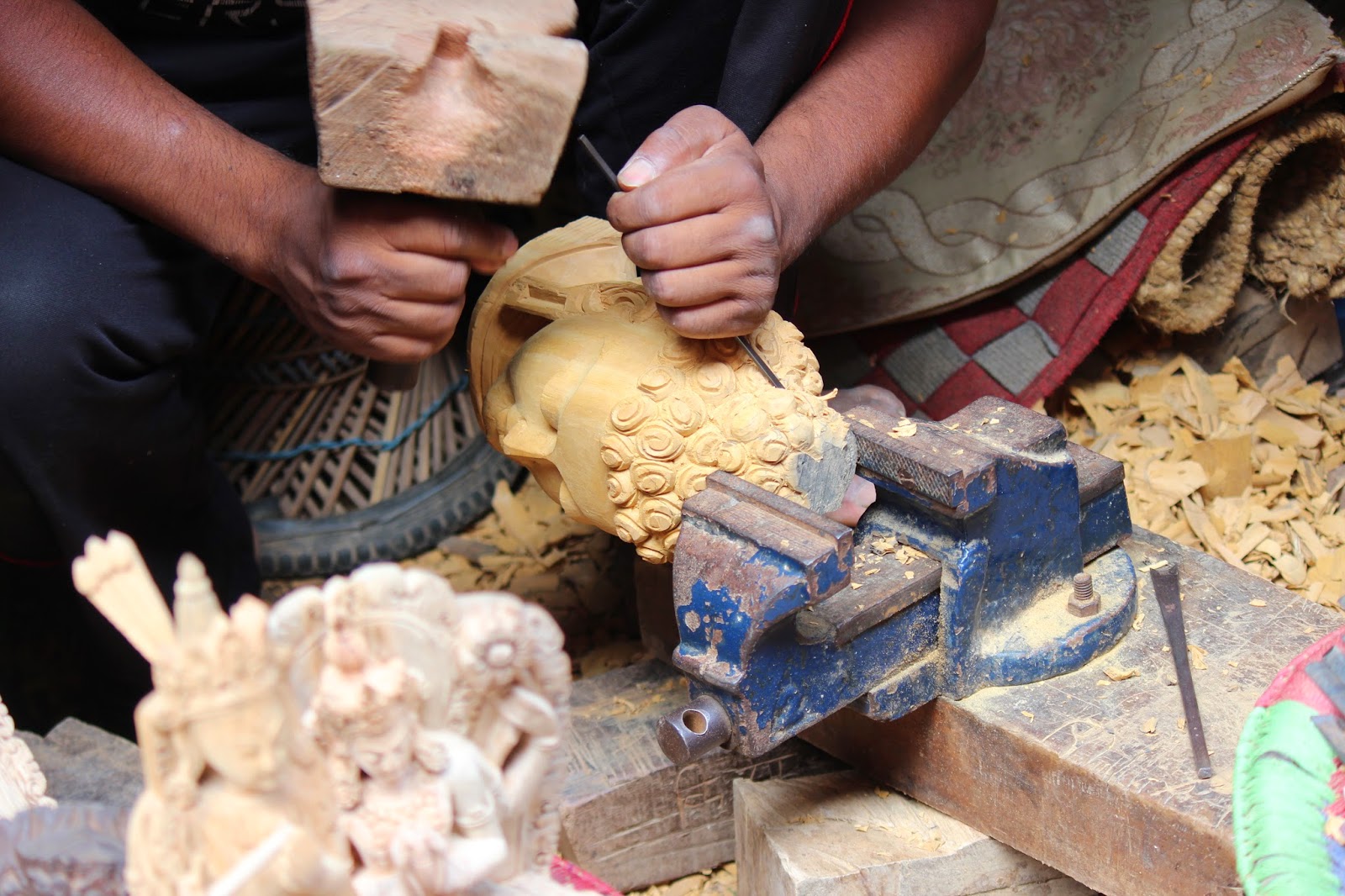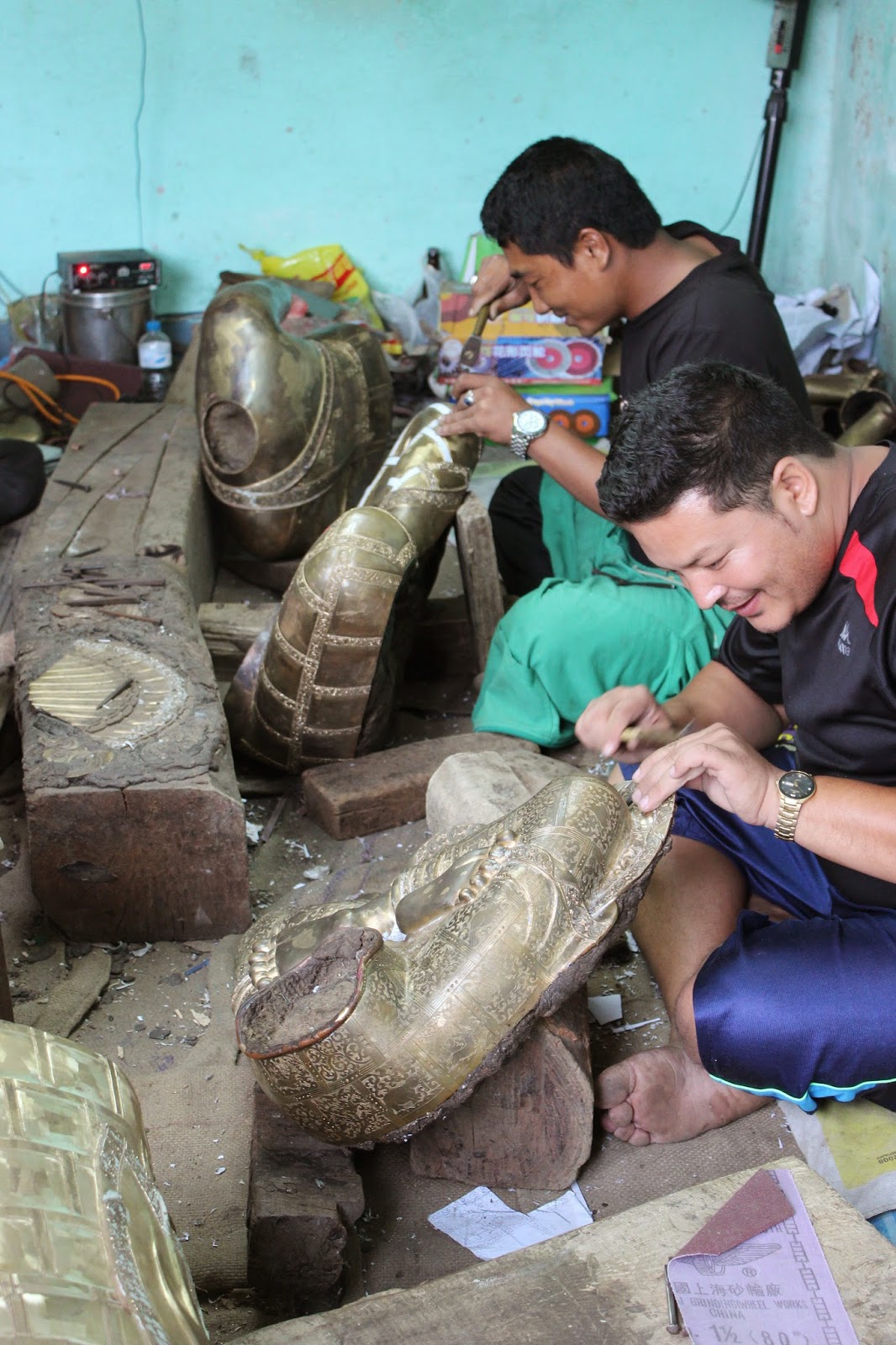Lamjung is one of Nepal’s 75 Districts and lies up the
eastern side of the Annapurna National Park. Besisahar is its main town. The
185 km trip from Kathmandu takes 8 hours along winding roads made treacherous
not only the poor black top but mainly by fellow road users. This illustrates
one of Nepal’s greatest barriers to development, ‘Access’. Remember Nepal has
no railways, so the road network is a vital lifeline.
 |
Roadside children avoid the heavy traffic on the two lane main route.
Yes, that's an open topped load of water buffalo!! |
 |
| Yes you are right, two goats travel on the roof of a micro bus ahead!! |
Besisahar lies up the Marsyangdi River valley in the centre
of the district. It’s a small market town whose main function apart being the
location of District Government offices, is the supply centre for the remote
and inaccessible surrounding villages. Happily we left the concept of ‘supermarket’
behind in the capital. Here small shops stock everything that is required to
sustain life and some luxuries affordable by the few. The tall gaily painted
dwellings hide the reality. Almost without exception they are divided into
flats each occupied by an extended family. When the eldest son marries he will
bring his new wife to live in his family home.
 |
| Besisahar serves the surrounding remote villages |
 |
| Besisahar main street. Jude describes it as a frontier town, it has that feel. |
 |
| The Eastern Annapurna Himal viewed from the top of our flat |
We have found a flat to rent, and begun to gather some
furniture for our two year stay. It’s a short walk from Jude’s work at Global
Action Nepal, and I’m a few minutes from my base in the governments District
Livestock Office. Whilst our visas are finalised our aim is to spend some time
trying to understand our new community and the context in which we will both
work.
 |
| Besisahar and its multi-story flats a distant memory in the remote hills |
 |
| Marginalised families have more modest accommodation |
To that end we have ventured up the steep valley sides to see
some more remote communities many of which are only accessible by foot. The
occasional 4x4 bus, jeep, and tractor with trailer scrabble up impossibly steep
and dangerous tracks to the higher levels. However, there is no escaping the amount of human effort that goes into
surviving in the remote villages. These people are subsistence farmers,
growing mainly for their own needs and selling any small surpluses.
 |
| A small farming family group and typical house, men folk work abroad. |
 |
| Jude meets a farmer/shop owner in the high hills. Again no men folk. |
The
harshness of the existence and need for cash has forced many male family
members to work off the land. Difficult terrain and distance force them to live
out of the family home, or worse still abroad. Gurung’s are the dominant ethnic group, who
traditionally choose to join the Nepalese army, or forces in India and the UK. The
huge workload falls to the remaining womenfolk and some older men, who cultivate the crops on
terraces, gather fodder for stock, carry surplus crops to sell and return with
essential supplies.
 |
| Maize drying near the traditional steading |
 |
A load of gourds begin their 3 hour journey to market.
The return 1000m climb may involve carrying 50kgs of rice. |
On the lower valley terraces in the sub-tropical climate
three crops a year can be grown. Rice,
beans and maize are the first choice but vegetables are no uncommon. High on
the valley sides at 1700m the rice is replaced by millet, but maize and beans
remain in the rotation. Subsistence is a hard life and not the choice of many
young people and so the predictable movement to the urban areas in search of an
easier life is well established.
 |
| Women and occasionally young girls cut and carry fodder daily for buffalo |
 |
| However harsh the work, dignity is always maintained.
|
 |
| Terraces are still used on the high hills, growing millet and some rice. |
 |
Daal baat eaten twice daily. Rice, veg curry, spinach, potatoes and the daal is in the bowl
and is poured over the rice. The veg. element is totally seasonal and in the harsher times can be nettles
rather than the more familiar spinach or other leaves. |
 |
| Wood fires clay stoves are still commonplace. |
 |
| Bee keeping is common |
So the context of our work in Nepal has started to piece
together as we witness marginalised communities clinging onto a traditional way
of life that brings places an attrition upon all, particularly the women.
 |
| The Nepali umberella |
 |
Two children look on as we pass buy.
What will their futures hold in these marginal communities? |

































































